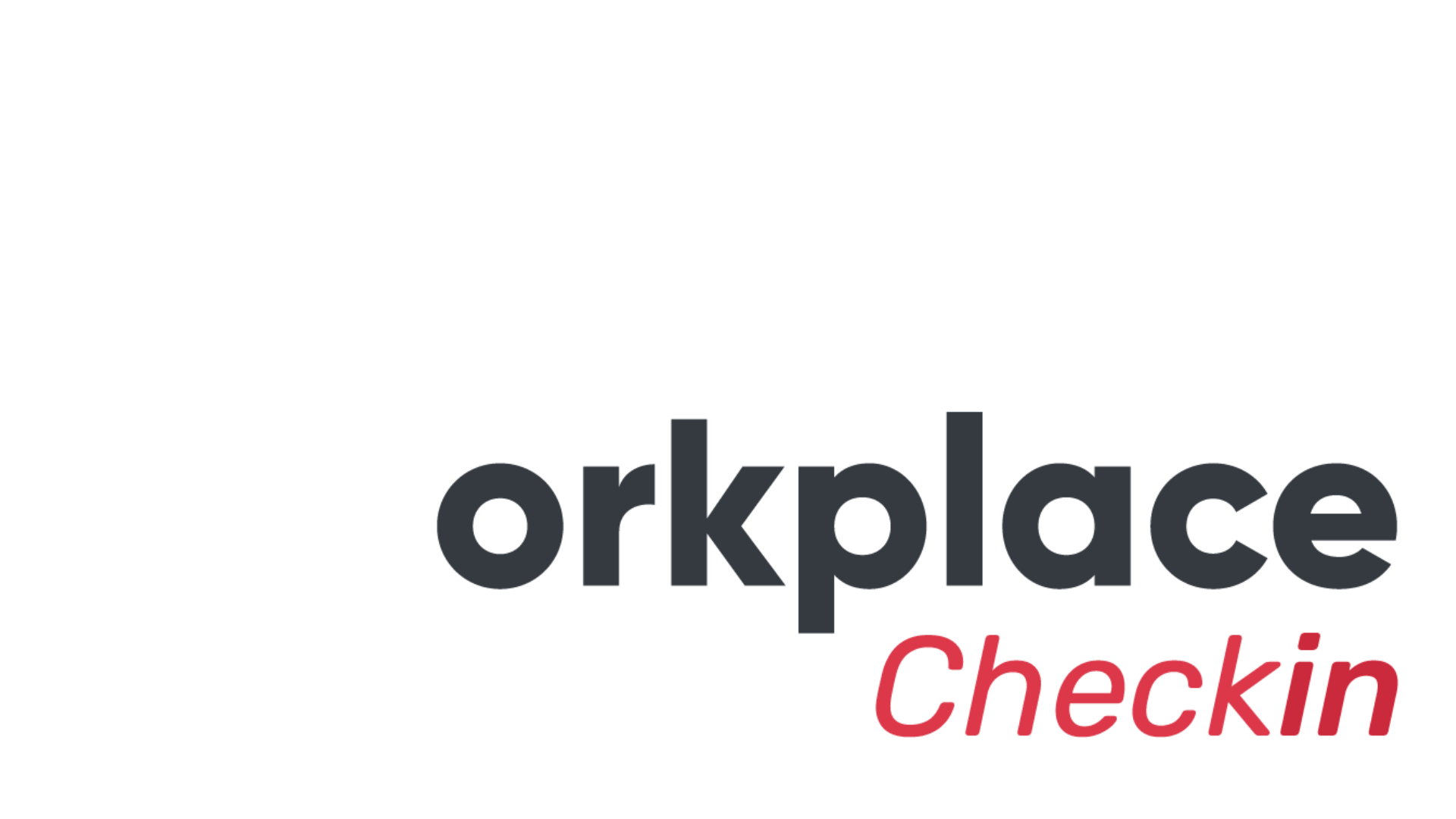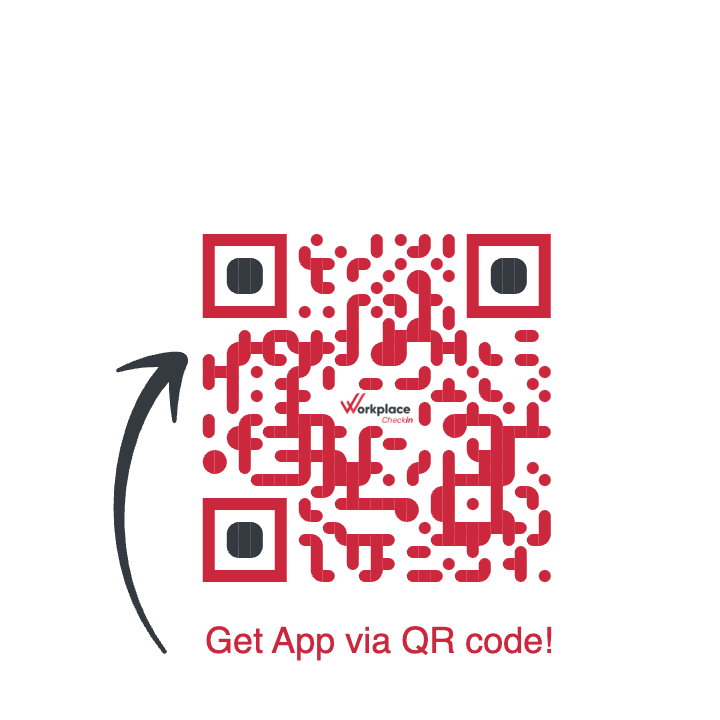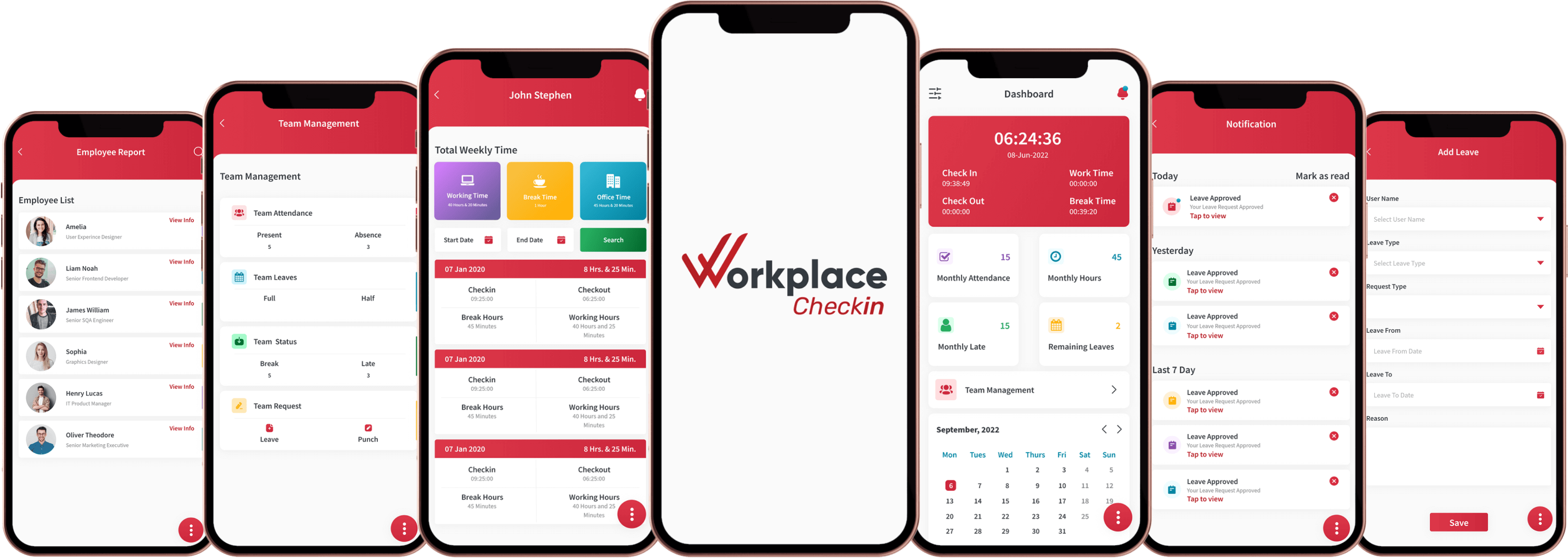

Strategies for Supporting Mental Health in the Workplace
In recent years, the importance of mental health in the workplace has gained significant attention. Employers have started recognizing that the well-being of their employees directly impacts productivity, engagement, and overall job satisfaction. As the stigma surrounding mental health decreases, it becomes increasingly vital for organizations to implement strategies that support mental health in the workplace. Here are some effective strategies to foster a mentally healthy work environment.

Promoting a Healthy Work-Life Balance
Promoting a healthy work-life balance is essential for maintaining the mental health and well-being of employees. When employees feel that they can adequately manage both their professional and personal lives, they are more likely to be satisfied with their jobs and perform at higher levels. Here are several strategies to help employers foster a healthy work-life balance:
1. Offer Flexible Work Hours
Flexible work schedules allow employees to tailor their work hours to better fit their personal needs and responsibilities. This can reduce stress and increase job satisfaction. Implementing flexible work hours can include:
Staggered Start and End Times: Allowing employees to start and finish work at different times can help them avoid rush-hour commutes, manage family responsibilities, and find time for personal activities.
Compressed Workweeks: Offering the option to work longer hours over fewer days (e.g., four 10-hour days instead of five 8-hour days) can provide employees with additional days off.
Part-Time and Job Sharing Options: For those who need or prefer reduced hours, part-time roles or job-sharing arrangements can help balance work and personal life.
2. Encourage the Use of Vacation Days
Employees should feel empowered to take their allotted vacation time without fear of negative consequences. This helps prevent burnout and promotes a healthier work-life balance. Employers can:
Promote a Vacation Policy: Regularly remind employees about the importance of taking time off and ensure that policies encourage vacation use.
Plan for Absences: Create a system that allows employees to delegate tasks and responsibilities so they can take time off without feeling guilty or overwhelmed upon return.
Model Behavior: Leaders and managers should set an example by taking their own vacation days and openly discussing the benefits of taking breaks.
3. Support Remote Work Options
Remote work can provide employees with the flexibility to manage their personal and professional lives more effectively. Employers can support remote work by:
Providing Necessary Tools and Technology: Ensure that employees have access to the technology and resources needed to work efficiently from home, such as laptops, VPNs, and collaboration software.
Setting Clear Expectations: Establish guidelines for remote work to ensure productivity while also allowing flexibility. Clear communication about availability, deadlines, and performance expectations is crucial.
Offering Remote Work Training: Provide training for employees and managers on best practices for remote work, including communication, time management, and maintaining work-life boundaries.
4. Implement Policies that Support Work-Life Balance
Company policies should reflect a commitment to work-life balance. This can include:
Parental Leave: Offering generous maternity, paternity, and adoption leave policies to support new parents.
Caregiver Support: Providing flexible options for employees who are caregivers to elderly family members or those with special needs.
Personal Time Off: Allowing for personal days that employees can use for various non-vacation needs, such as mental health days or handling personal matters.
5. Create a Culture that Values Balance
The organizational culture should prioritize and support work-life balance. This involves:
Leading by Example: Managers and senior leaders should demonstrate a commitment to work-life balance in their own lives. This can help set a positive example and normalize taking breaks and setting boundaries.
Recognizing Overwork: Be vigilant about the signs of burnout and overwork among employees. Encourage regular check-ins to ensure workloads are manageable and provide support where needed.
Promoting a Results-Oriented Approach: Focus on the outcomes and results of work rather than the hours spent working. This can help employees feel more empowered to manage their time effectively.
6. Encourage Breaks and Downtime
Regular breaks and downtime are crucial for maintaining productivity and mental health. Employers can:
Promote Regular Breaks: Encourage employees to take short breaks throughout the day to rest and recharge. This can be facilitated through reminders or by setting an example.
Create Relaxation Spaces: Provide spaces within the office where employees can take a break, relax, and unwind. This can include quiet rooms, lounges, or outdoor areas.
Support Non-Work Activities: Organize activities that promote relaxation and camaraderie, such as team-building events, wellness workshops, and social gatherings.
7. Monitor Workloads
Ensuring that workloads are reasonable and manageable is key to preventing burnout and promoting a healthy work-life balance. Employers should:
Assess Workload Distribution: Regularly review the distribution of tasks and responsibilities to ensure no employee is consistently overloaded.
Provide Resources and Support: Offer additional resources or assistance during peak periods or when workloads are particularly high.
Encourage Delegation: Train managers and employees on effective delegation practices to distribute work more evenly and prevent overburdening any single individual.

Creating an Open and Supportive Culture
Creating an open and supportive culture in the workplace is fundamental to fostering a positive environment where employees feel valued and understood. When employees feel safe and supported, they are more likely to engage, collaborate, and be productive. Here are several detailed strategies to help build such a culture:
1. Train Managers and Employees on Mental Health Awareness
Training is crucial to creating a culture that understands and values mental health. It involves:
Mental Health First Aid Training: Equip managers and employees with the skills to recognize signs of mental health issues and provide initial support. This training can include identifying symptoms of common mental health conditions, understanding the impact of mental health on work, and knowing how to approach conversations about mental health.
Regular Workshops and Seminars: Offer ongoing education on mental health topics. These can include stress management, resilience training, and the importance of mental well-being.
Inclusive Communication Training: Teach employees and managers how to communicate inclusively and empathetically. This can help in creating a more supportive and understanding environment.
2. Encourage Open Conversations About Mental Health
Creating a safe space for open conversations about mental health can help reduce stigma and promote support. Strategies include:
Normalize Mental Health Discussions: Leaders should openly talk about mental health, sharing their own experiences if comfortable, to set the tone for openness.
Regular Check-Ins: Encourage managers to have regular, informal check-ins with their team members. These conversations should go beyond work tasks to include well-being and any personal concerns.
Anonymous Feedback Channels: Provide platforms where employees can share their thoughts and concerns anonymously. This can help identify issues that employees might be hesitant to bring up directly.
3. Provide Mental Health Resources
Making mental health resources readily available and promoting their use is vital. These resources can include:
Employee Assistance Programs (EAPs): Offer confidential counseling services and support for employees dealing with personal or work-related issues. Promote the availability of EAPs through regular communication and training.
Resource Libraries: Create a digital or physical library of mental health resources, including articles, books, and contact information for mental health professionals.
Wellness Programs: Implement wellness programs that focus on mental health, such as meditation sessions, stress management workshops, and mindfulness training.
4. Foster a Positive Social Environment
A positive social environment can greatly enhance mental well-being and create a sense of belonging. To foster this environment, employers can:
Team-Building Activities: Organize regular team-building activities that promote collaboration and strengthen interpersonal relationships. These can range from team lunches to collaborative projects or retreats.
Peer Support Programs: Establish peer support groups or buddy systems where employees can share their experiences and support each other. This can be particularly helpful for new employees or those going through tough times.
Celebrating Successes: Recognize and celebrate both individual and team achievements. This can boost morale and foster a culture of appreciation.
5. Establish Clear and Compassionate Policies
Policies should reflect the organization’s commitment to supporting mental health. Effective policies might include:
Mental Health Days: Allow employees to take mental health days without stigma. These should be treated with the same importance as physical health sick days.
Flexible Work Arrangements: Provide flexibility in work schedules and environments to accommodate the mental health needs of employees. This can include remote work options, flexible hours, and job-sharing arrangements.
Anti-Discrimination Policies: Ensure that there are clear policies against discrimination and harassment, including specific provisions related to mental health.
6. Lead by Example
Leadership plays a crucial role in shaping the workplace culture. Leaders should:
Model Healthy Behaviors: Demonstrate a commitment to mental health by taking breaks, managing stress, and balancing work and personal life.
Show Empathy and Support: Respond to employees’ mental health disclosures with empathy and support. Leaders should be approachable and proactive in offering assistance.
Promote Work-Life Balance: Encourage employees to disconnect after work hours and use their vacation days. Leaders should also respect these boundaries themselves.
7. Monitor and Evaluate Culture
Regularly assess the workplace culture to ensure it remains supportive and open. This can be done through:
Employee Surveys: Conduct anonymous surveys to gather feedback on the workplace culture and identify areas for improvement.
Focus Groups: Organize focus groups to discuss mental health openly and gather in-depth feedback.
Continuous Improvement: Use the feedback to make necessary changes and continuously improve the culture. This might include updating policies, providing additional resources, or introducing new initiatives.

Implementing Employee Assistance Programs (EAPs)
Employee Assistance Programs (EAPs) are invaluable resources that provide confidential counseling and support services to employees dealing with personal or work-related issues. These programs play a crucial role in promoting mental health and well-being in the workplace. Here's a detailed look at how organizations can effectively implement and utilize EAPs:
1. Comprehensive Coverage
Ensure that the EAP offers a wide range of services to address various mental health and personal issues. This may include:
Counseling Services: Provide access to licensed counselors or therapists who can offer confidential support for issues such as stress, anxiety, depression, substance abuse, grief, and relationship problems.
Legal and Financial Consultations: Offer assistance with legal matters, financial planning, debt management, and other related concerns that may impact employees' well-being.
Referrals to Specialists: Connect employees with specialized mental health professionals, such as psychiatrists or psychologists, for more intensive treatment if needed.
2. Accessibility and Confidentiality
Make sure that the EAP is easily accessible and that confidentiality is maintained at all times. Consider the following:
24/7 Hotline: Provide a confidential hotline that employees can call anytime, day or night, to speak with a counselor or access immediate support in crisis situations.
Online and In-Person Counseling: Offer both online and in-person counseling options to accommodate employees' preferences and schedules.
Confidentiality Assurance: Clearly communicate to employees that their conversations with EAP counselors are confidential and will not be shared with their employer unless there is a risk of harm to themselves or others.
3. Promotion and Awareness
Promote the EAP effectively to ensure that employees are aware of its existence and how to access its services. Consider the following strategies:
Information Sessions: Host informational sessions or webinars to educate employees about the EAP, its services, and the benefits of seeking support.
Marketing Materials: Create posters, flyers, and brochures that highlight the EAP's services and contact information. Display these materials prominently in common areas and on digital platforms.
Training for Managers:
Train managers and supervisors on how to recognize signs of distress in their team members and how to refer them to the EAP for support.
4. Integration with Wellness Programs
Integrate the EAP with existing wellness programs to provide holistic support for employees' physical, mental, and emotional well-being. This may involve:
Collaboration with Health Initiatives: Coordinate with wellness committees or health promotion programs to ensure that mental health is addressed as part of overall wellness efforts.
Cross-Promotion of Services: Promote EAP services during wellness events and activities, and vice versa, to encourage employees to take advantage of all available resources.
Feedback and Evaluation: Solicit feedback from employees on the effectiveness of the EAP and its integration with wellness programs, and make adjustments as needed based on their input.
5. Culturally Competent Services
Ensure that EAP services are culturally competent and sensitive to the diverse needs of employees. This involves:
Multilingual Support: Provide counseling services in multiple languages to accommodate employees from diverse linguistic backgrounds.
Culturally Relevant Resources: Offer resources and materials that reflect the cultural diversity of the workforce and address specific cultural considerations related to mental health.
Training for Counselors: Train EAP counselors on cultural competence and sensitivity to better serve employees from different cultural backgrounds.
6. Continuous Improvement and Evaluation
Regularly evaluate the effectiveness of the EAP and make adjustments as needed to better meet the needs of employees. This may include:
Surveys and Feedback: Conduct surveys or focus groups to gather feedback from employees about their experiences with the EAP and areas for improvement.
Utilization Data Analysis: Analyze utilization data to identify trends in the types of issues employees are seeking support for and adjust EAP services accordingly.
Benchmarking with Best Practices: Compare the organization's EAP offerings and utilization rates with industry benchmarks and best practices to identify areas for improvement.
7. Support for Organizational Crisis Response
In times of crisis or emergencies, EAPs can provide critical support for employees and the organization as a whole. Consider:
Crisis Intervention Services: Ensure that the EAP has protocols in place to provide immediate support and counseling to employees in the aftermath of a crisis or traumatic event.
Training for Crisis Response Teams: Train designated crisis response teams within the organization on how to effectively utilize EAP resources and support employees during times of crisis.
Communication Plans: Develop communication plans to inform employees about available EAP services and support in the event of a crisis, emphasizing the importance of seeking help when needed.

Foster a Positive Work Environment
Fostering a positive work environment is essential for promoting employee well-being, engagement, and productivity. A positive workplace culture not only enhances job satisfaction but also contributes to the overall success of the organization. Here's a detailed exploration of how employers can cultivate a positive work environment:
1. Clear Communication and Transparency
Open and transparent communication is the foundation of a positive work environment. Employers can achieve this by:
Regular Updates: Keep employees informed about organizational goals, changes, and developments through regular updates, team meetings, and town hall sessions.
Accessible Leadership: Ensure that leaders and managers are approachable and accessible to employees. Encourage an open-door policy where employees feel comfortable sharing their thoughts, concerns, and ideas.
Feedback Mechanisms: Establish feedback channels where employees can provide input, ask questions, and offer suggestions for improvement. Actively listen to feedback and address any issues or concerns in a timely manner.
2. Cultivate a Culture of Appreciation and Recognition
Recognizing and appreciating employees' contributions is vital for morale and motivation. Employers can foster a culture of appreciation by:
Acknowledging Achievements: Publicly recognize and celebrate individual and team accomplishments. This can be done through emails, meetings, newsletters, or social media shoutouts.
Employee Recognition Programs: Implement formal recognition programs that reward employees for their hard work, innovation, and dedication. These programs can include awards, bonuses, or other incentives.
Regular Feedback: Provide constructive feedback and praise to employees on a regular basis. Highlighting their strengths and areas for improvement helps them feel valued and supported.
3. Promote Collaboration and Teamwork
Encouraging collaboration and teamwork creates a sense of belonging and camaraderie among employees. Strategies to promote collaboration include:
Cross-Functional Projects: Assign projects that require collaboration across departments or teams. This fosters cooperation, breaks down silos, and encourages knowledge sharing.
Team-Building Activities: Organize team-building events, retreats, or workshops that promote trust, communication, and unity among team members.
Encourage Idea Sharing: Create platforms or meetings where employees can share their ideas, expertise, and experiences. Encourage brainstorming sessions and foster a culture of innovation.
4. Provide Opportunities for Growth and Development
Investing in employees' professional growth and development demonstrates a commitment to their long-term success. Employers can support growth by:
Training and Development Programs: Offer training workshops, seminars, and online courses to enhance employees' skills and knowledge. Provide opportunities for both technical and soft skills development.
Mentorship Programs: Pair employees with experienced mentors who can provide guidance, advice, and support in their career development. Encourage mentorship relationships to foster personal and professional growth.
Career Advancement Opportunities: Create pathways for career advancement within the organization. Offer promotions, lateral moves, and opportunities for employees to take on new challenges and responsibilities.
5. Prioritize Work-Life Balance
Supporting employees' work-life balance is crucial for their well-being and overall satisfaction. Employers can promote work-life balance by:
Flexible Work Arrangements: Offer flexible work hours, remote work options, and compressed workweeks to accommodate employees' personal needs and preferences.
Encourage Time Off: Encourage employees to use their vacation days and take breaks to recharge. Discourage overwork and create a culture that values rest and relaxation.
Lead by Example: Demonstrate a healthy work-life balance as a leader by taking breaks, using vacation days, and respecting boundaries. Encourage managers to support their team members in achieving balance as well.
6. Foster a Culture of Respect and Inclusion
Creating a workplace where all employees feel respected, valued, and included is essential for fostering a positive environment. Employers can promote respect and inclusion by:
Diversity and Inclusion Initiatives: Implement initiatives and programs that promote diversity, equity, and inclusion within the organization. Ensure that policies and practices are inclusive and free from discrimination.
Zero-Tolerance for Harassment: Enforce strict policies against harassment and discrimination of any kind. Provide training to employees on respectful workplace behavior and bystander intervention.
Celebrating Diversity: Celebrate cultural holidays, heritage months, and other diversity-related events to recognize and appreciate the diversity of the workforce.
7. Create a Pleasant Physical Environment
The physical workspace plays a significant role in shaping the overall work environment. Employers can create a pleasant physical environment by:
Comfortable Workspaces: Provide ergonomic furniture, ample natural light, and adequate ventilation to create a comfortable and inviting workspace.
Wellness Amenities: Offer amenities such as relaxation rooms, fitness centers, or outdoor spaces where employees can unwind and recharge.
Personalization: Allow employees to personalize their workspace with photos, plants, or decorations that reflect their personality and preferences.

Providing mental health benefits
Providing mental health benefits is essential for supporting the well-being of employees and creating a healthy workplace culture. Mental health benefits encompass a range of resources and services aimed at addressing the mental health needs of employees. Here's a detailed exploration of how organizations can effectively provide mental health benefits:
1. Comprehensive Coverage
Ensure that mental health benefits offer comprehensive coverage for a wide range of mental health services and treatments. This may include:
Therapy and Counseling: Coverage for individual, couples, or family therapy sessions with licensed mental health professionals.
Psychiatric Services: Coverage for psychiatric evaluations, medication management, and other services provided by psychiatrists.
Inpatient and Outpatient Treatment: Coverage for both inpatient and outpatient mental health treatment programs, including hospitalization, intensive outpatient programs (IOPs), and partial hospitalization programs (PHPs).
Teletherapy Services: Coverage for virtual therapy sessions conducted via video or phone for employees who prefer remote counseling options.
2. Accessible Resources
Ensure that mental health resources are easily accessible to employees and their families. This may involve:
Provider Networks: Partner with a network of mental health providers to ensure that employees have access to a wide range of qualified professionals in their area.
Online Platforms: Offer access to online mental health platforms or apps that provide resources, self-help tools, and virtual therapy options.
Employee Assistance Programs (EAPs): Integrate EAP services into mental health benefits to provide immediate support and counseling for employees facing personal or work-related challenges.
3. Financial Assistance
Provide financial assistance to help employees afford mental health services and treatments. This may include:
Insurance Coverage: Offer comprehensive health insurance plans that include mental health benefits with reasonable copayments, deductibles, and out-of-pocket maximums.
Health Savings Accounts (HSAs) or Flexible Spending Accounts (FSAs): Provide tax-advantaged accounts that employees can use to pay for mental health expenses not covered by insurance, such as copayments, deductibles, and out-of-network services.
Financial Counseling: Offer access to financial counseling services to help employees navigate the financial aspects of mental health care, such as understanding insurance coverage and managing medical expenses.
4. Wellness Programs
Integrate mental health into overall wellness programs to promote holistic well-being. This may involve:
Mental Health Education: Offer workshops, seminars, or webinars on mental health topics such as stress management, resilience building, and self-care.
Mindfulness and Meditation Programs: Provide opportunities for employees to participate in mindfulness-based stress reduction programs, meditation sessions, or yoga classes.
Wellness Challenges: Organize challenges or campaigns that encourage employees to prioritize their mental health, such as sleep challenges, gratitude journals, or fitness challenges with a focus on mental well-being.
5. Stigma Reduction Initiatives
Implement initiatives to reduce stigma surrounding mental health and encourage help-seeking behavior. This may include:
Educational Campaigns: Launch campaigns to raise awareness about mental health issues, reduce stigma, and promote a culture of openness and support.
Training for Managers and Employees: Provide training on how to recognize signs of mental distress, have supportive conversations, and connect employees with appropriate resources.
Employee Testimonials: Share personal stories and testimonials from employees who have sought help for mental health issues to demonstrate that seeking support is normal and encouraged.
6. Employee Support Resources
Provide additional support resources for employees facing mental health challenges. This may involve:
Peer Support Groups: Facilitate peer support groups or employee resource groups where individuals facing similar mental health challenges can connect, share experiences, and provide mutual support.
Crisis Intervention Services: Ensure that employees have access to crisis intervention services, such as hotlines or crisis text lines, for immediate support in times of crisis or emergency.
Return-to-Work Programs: Implement return-to-work programs that support employees transitioning back to work after taking time off for mental health reasons, providing accommodations and phased reintegration as needed.
7. Evaluation and Continuous Improvement
Regularly evaluate the effectiveness of mental health benefits and make adjustments as needed to better meet the needs of employees. This may involve:
Utilization Data Analysis: Analyze utilization data to understand how employees are using mental health benefits and identify areas for improvement or expansion.
Employee Feedback Surveys: Solicit feedback from employees about their experiences with mental health benefits, including satisfaction levels, perceived barriers to access, and suggestions for improvement.
Benchmarking with Best Practices: Compare the organization's mental health benefits offerings and utilization rates with industry benchmarks and best practices to identify opportunities for enhancement.

Encourage Physical Activity
Encouraging physical activity in the workplace is not only beneficial for employees' physical health but also for their mental well-being and overall productivity. Incorporating physical activity into the workday can boost energy levels, reduce stress, and improve mood. Here are several strategies to effectively encourage physical activity in the workplace:
1. Promote Exercise Breaks
Encourage employees to take short breaks throughout the day to engage in physical activity. This can include:
Stretching Breaks: Encourage employees to take short stretching breaks at their desks to reduce muscle tension and improve flexibility.
Walking Meetings: Instead of sitting in a conference room, suggest walking meetings where employees can discuss business matters while getting some exercise.
Stair Climbing: Encourage employees to take the stairs instead of the elevator whenever possible to incorporate more physical activity into their daily routines.
2. Provide On-Site Fitness Facilities
Offer on-site fitness facilities or amenities to make it easier for employees to engage in physical activity. This can include:
Gym or Fitness Center: If space permits, provide access to a gym or fitness center equipped with cardio machines, weights, and exercise classes.
Yoga or Meditation Rooms: Create dedicated spaces for yoga or meditation practice where employees can unwind and recharge during breaks.
Bike Storage and Showers: Encourage employees to bike to work by providing secure bike storage facilities and showers for those who want to freshen up after their ride.
3. Organize Wellness Challenges
Organize wellness challenges or competitions to motivate employees to stay active and healthy. This can include:
Step Challenges: Challenge employees to track their daily steps and compete to see who can reach the highest step count within a certain timeframe.
Fitness Challenges: Create challenges focused on specific fitness goals, such as completing a certain number of workouts or achieving a personal best in a physical activity.
Team Challenges: Foster camaraderie and teamwork by organizing challenges that require teams to work together to achieve a common fitness goal.
4. Offer Fitness Subsidies or Discounts
Provide financial incentives or subsidies to encourage employees to participate in fitness activities. This can include:
Gym Memberships: Offer subsidies or reimbursements for gym memberships or fitness classes to make them more affordable for employees.
Fitness Equipment Reimbursement: Provide allowances or reimbursements for employees to purchase fitness equipment, such as exercise mats, resistance bands, or fitness trackers.
Discounted Wellness Programs: Partner with local fitness centers or wellness providers to offer discounted rates on wellness programs, classes, or personal training sessions for employees.
5. Incorporate Physical Activity into Team Building
Incorporate physical activity into team-building activities to promote teamwork and bonding among employees. This can include:
Sports Tournaments: Organize friendly sports tournaments, such as soccer, basketball, or volleyball, where teams can compete against each other in a fun and supportive environment.
Outdoor Adventure Activities: Plan outdoor activities such as hiking, kayaking, or rock climbing outings to encourage team members to work together and enjoy the great outdoors.
Charity Walks or Runs: Participate as a team in charity walks or runs to support a meaningful cause while promoting physical activity and teamwork.
6. Provide Wellness Resources and Education
Offer resources and education to support employees in maintaining an active and healthy lifestyle. This can include:
Wellness Workshops: Host workshops or lunch-and-learn sessions on topics such as exercise tips, stress management techniques, and the importance of physical activity for overall health and well-being.
Fitness Challenges: Provide resources such as workout plans, exercise videos, or fitness trackers to help employees stay motivated and track their progress during wellness challenges.
Health Screenings and Assessments: Offer health screenings or assessments to help employees identify areas for improvement and set personalized fitness goals.
7. Lead by Example
As leaders and managers, it's important to lead by example and prioritize physical activity in your own life. This can include:
Participation: Participate in wellness challenges, fitness activities, and team-building events to show your support and commitment to promoting physical activity in the workplace.
Encouragement: Encourage your team members to prioritize their health and well-being by incorporating physical activity into their daily routines.
Flexibility: Be flexible and accommodating with scheduling to allow employees to take breaks for physical activity or attend fitness classes during work hours when possible.
Regular Check-ins and Feedback
Regular check-ins and feedback are essential components of a supportive and productive workplace culture. These practices facilitate open communication, foster trust, and provide opportunities for growth and improvement for both employees and managers. Here's a detailed exploration of how regular check-ins and feedback can be effectively implemented in the workplace:
1. Scheduled One-on-One Meetings
Regular one-on-one meetings between managers and their direct reports provide a dedicated space for open dialogue and feedback. These meetings can:
Establish Rapport: Build a strong working relationship between managers and employees based on trust, understanding, and mutual respect.
Discuss Progress: Review progress on goals, projects, and tasks to ensure alignment with organizational objectives and address any challenges or roadblocks.
Provide Support: Offer guidance, mentorship, and support to help employees overcome obstacles, develop new skills, and achieve their professional growth objectives.
Address Concerns: Create a safe space for employees to voice concerns, ask questions, and provide feedback on their experiences within the organization.
2. Real-Time Feedback
In addition to scheduled check-ins, providing real-time feedback on an ongoing basis can help employees stay on track and continuously improve. This can involve:
Timely Recognition: Acknowledge and celebrate achievements, milestones, and successes as they occur to reinforce positive behavior and boost morale.
Constructive Criticism: Offer constructive feedback and coaching in the moment to address performance issues, correct mistakes, and encourage professional development.
Open Door Policy: Maintain an open-door policy where employees feel comfortable approaching their managers at any time to seek guidance, clarification, or feedback as needed.
3. 360-Degree Feedback
Implementing a 360-degree feedback process allows employees to receive feedback not only from their managers but also from peers, direct reports, and other stakeholders. This can:
Provide Multiple Perspectives: Offer a comprehensive view of an employee's strengths, weaknesses, and areas for improvement from various sources within the organization.
Promote Self-awareness: Encourage self-reflection and self-awareness by providing employees with insights into how their behavior and performance are perceived by others.
Facilitate Development: Identify patterns and themes in feedback to inform personalized development plans and strategies for growth.
4. Employee Surveys
Regularly surveying employees about their experiences, perceptions, and satisfaction levels can provide valuable insights into the overall health of the organization. Surveys can:
Gauge Employee Engagement: Measure employee engagement levels, identify areas of dissatisfaction or concern, and gather feedback on organizational culture, leadership, and work environment.
Identify Trends: Track changes in employee sentiment over time to identify trends, patterns, and areas for improvement.
Drive Actionable Change: Use survey results to inform strategic decisions, prioritize initiatives, and implement targeted interventions to address areas of concern.
5. Peer Feedback and Recognition
Encouraging peer-to-peer feedback and recognition fosters a culture of collaboration, support, and appreciation among colleagues. This can involve:
Peer Recognition Programs: Establish programs or platforms where employees can publicly recognize and appreciate their peers' contributions, achievements, and efforts.
360-Degree Peer Reviews: Incorporate peer feedback into performance evaluations to provide a well-rounded assessment of an employee's performance and contributions.
Team Feedback Sessions: Facilitate team feedback sessions where team members can share observations, provide support, and offer constructive feedback to help each other grow and succeed.
6. Continuous Improvement
Regular check-ins and feedback should be part of an ongoing process of continuous improvement. This involves:
Iterative Approach: Embrace an iterative approach to feedback and performance management, where goals, expectations, and feedback are revisited and adjusted as needed over time.
Learning Culture: Cultivate a learning culture where feedback is seen as an opportunity for growth and development rather than criticism or judgment.
Adaptability: Be flexible and adaptive in response to feedback, willing to experiment with new approaches, and make changes based on lessons learned.
7. Technology and Tools
Utilize technology and tools to streamline the feedback process and make it more accessible and efficient. This can include:
Feedback Platforms: Implement digital feedback platforms or software tools that facilitate the collection, analysis, and distribution of feedback.
Performance Management Systems: Invest in performance management systems that support ongoing feedback, goal setting, and performance tracking in a centralized and transparent manner.
Anonymous Feedback Mechanisms: Provide anonymous feedback channels where employees can share their thoughts, concerns, and suggestions without fear of reprisal.
Conclusion
Supporting mental health in the workplace is not just about addressing issues when they arise, but also about creating a proactive and supportive environment where employees feel valued and cared for. By implementing these strategies, employers can contribute to the overall well-being of their employees, which in turn can lead to a more productive, engaged, and loyal workforce. Prioritizing mental health is not just a compassionate choice, but also a smart business decision.






